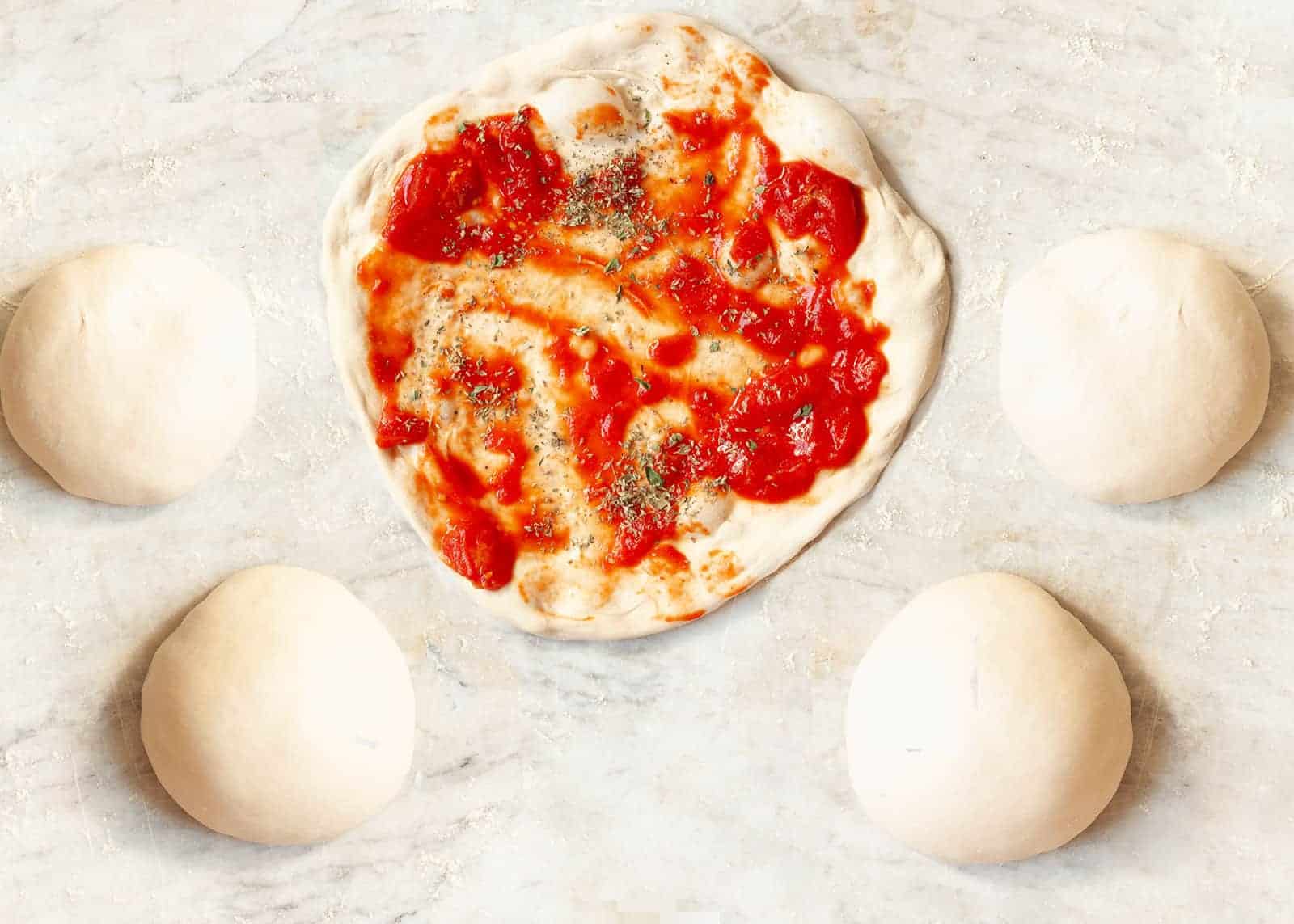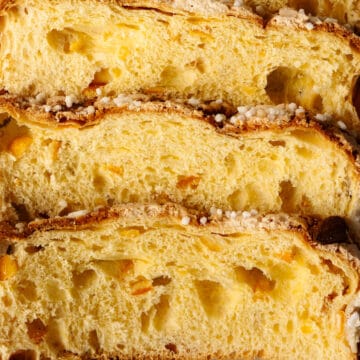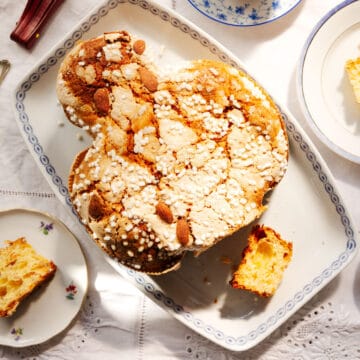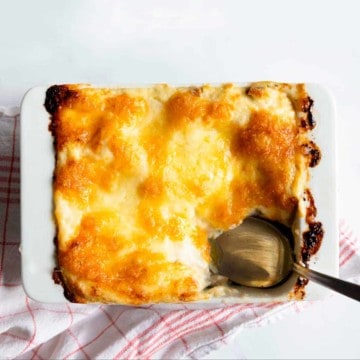
Did you know that Italian pizza dough recipe and pizza have been awarded world heritage status by UNESCO? And with them the Pizzaioli and its art. This pizza dough recipe is a crispy treat that you can easily make yourself. Not only the children will love this pizza!
Jump to RecipeGood things take time
For the perfect pizza dough, you need a little patience. The longer the dough is left, the tastier and crispier the pizza will be afterwards. First of all, a pre-ferment (also known as mother dough) is mixed, the biga (often called Poolish outside Italy). The traditional biga is relatively dry (1000g flour, 450ml water, 5g yeast) and ferments slowly, which is important for the taste of the dough. It also requires less yeast, which is good for our stomach and intestines. With more water in the pre-ferment, you can reduce the fermentation time. Nevertheless, there are still enough aromas that make this dough very special.

The right pizza flour
It is not only the slow maturing of the dough over a three-day period which is very important for a pizza dough, but also the flour used. During the long rise, the yeast bacteria need protein in order to multiply. The best way to do this is to use a strong gluten flour with a protein content of about 14-15 per cent. Manitoba flour type 0 W 380 is ideal for making your Neapolitan pizza perfectly crispy, with a large-pored, airy crust.
📖 Recipe

Pizza dough recipe
Ingredients
Biga liquida (Poolish)
- 700 g water
- 700 g flour, Manitoba, type 0 W 380
- 5 g fresh yeast, or a knife tip of dry yeast
Dough
- 300 g flour
- 18 g salt
- 18 g olive oil
Toppings
- Tomato sauce
- Mozzarella
- basil, fresh leaves
Instructions
- For the biga liquida, mix all the ingredients in a high bowl and stir thoroughly. Cover with plastic foil. Pierce holes into the plastic wrap with a fork so that the dough can breathe. Leave to ferment in the fridge for 18-24 hours.
- The next day take the dough out of the fridge and mix it with 300g flour in a food processor or by hand. Once the flour is well mixed in, add salt. Knead for two minutes, then add the oil. Knead the dough until it loosens from the edges. After kneading, the dough should have a temperature of 24°C.
- Place the dough in a container and leave to rest in a cool place for another 24 hours. Cover the dough again with perforated plastic foil.
- Take the dough out of the fridge and split it into 180-220 g pieces. Shape them into a round form and put them in a flat container (under perforated plastic foil) in the fridge for 12 hours for one last time.
- Pre-heat the oven to 250-260°C (upper/lower heat or Moisture Plus). Form the rolls into flat pizzas. Pull and push the dough from the middle outwards. The pizza should then have a relatively high rim (cornicione). Sprinkle the “naked” dough with a little water and bake for 6 minutes. Take it out of the oven again and only now cover the flat centre with tomato sauce and mozzarella. Bake the pizza at 260° C for another 3-4 minutes, or until the mozzarella has melted and the edges are golden brown. Serve garnished with basil.
Notes
*
You also need a large container to allow the dough to rise in the fridge (the dough triples its volume) and a flat container for the pizza dough pieces.
Nutrition
Buon appetito!






Sionggo
Thank you! I am from Sionggo from Singapore. Recently, I found out about Neapolitan pizza from a store in my neighborhood. I like it very much. I am glad that I found the recipe for the Neapolitan pizza from AModoMio. I will try to bake one following your recipe during this Christmas holiday.
Thank you once again and Happy Holidays!